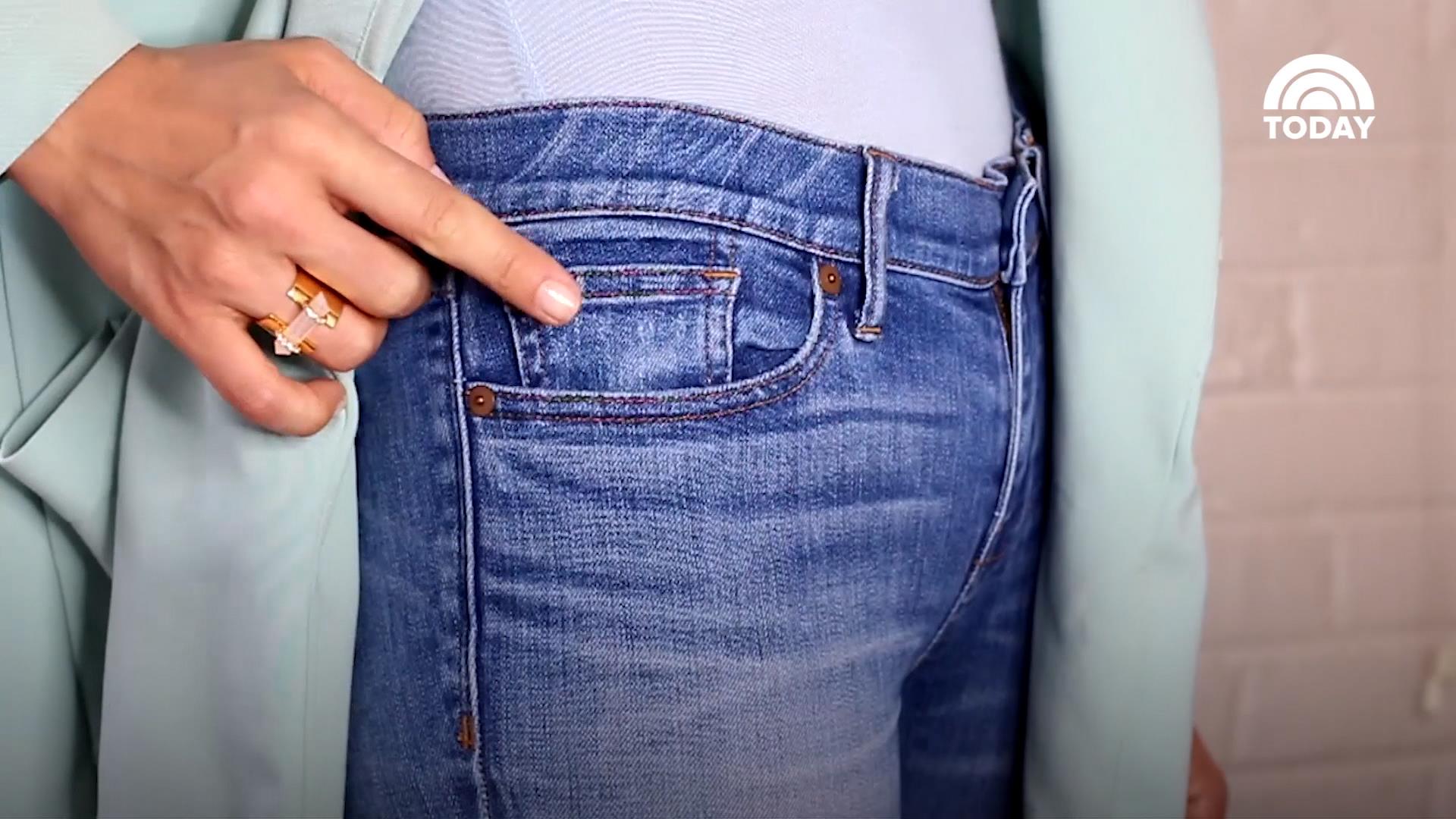
Introduction
A ubiquitous element in almost every pair of jeans, yet often overlooked and underutilized, is the small pocket situated within the larger front pocket. Known colloquially as the watch pocket or coin pocket, this diminutive feature has been a part of denim history since its inception. This article delves into the purpose and intriguing backstory behind this seemingly insignificant yet historically significant component.
1. Historical Roots:
The origin of the little pocket can be traced back to the late 19th century when Levi Strauss and Jacob Davis introduced the first ever blue jeans. Initially designed for miners during the Gold Rush era, these sturdy pants featured a small, narrow pocket specifically intended to hold pocket watches. At that time, pocket watches were not only functional but also a symbol of status, thus necessitating a secure place to keep them close at hand.
2. Evolution Over Time:
As fashion trends evolved and the use of pocket watches became less common, the purpose of the small pocket shifted. It adapted to serve as a convenient storage space for small items such as coins, keys, or even memory cards in today’s digital age. Despite the changing times, the little pocket remained an enduring design element in jeans, preserving a connection to their historical roots.
3. Modern Usage and Adaptation:
In contemporary fashion, the little pocket continues to serve a variety of purposes. Some brands have creatively reimagined it, using it as a stylish accent with unique stitching, patterns, or colors. Others incorporate it into their designs as a nod to tradition while ensuring functionality by making it large enough to accommodate modern essentials like credit cards or earbuds.
4. The Cultural Significance:
Beyond its practical uses, the little pocket on jeans holds a cultural significance. It represents the resilience and adaptability of denim – a fabric that has gone from workwear staple to global fashion icon. The persistence of this small detail speaks volumes about the timeless nature of well-designed clothing and how it evolves alongside societal changes.
While the original function of the little pocket on jeans may have changed over the years, its presence remains a testament to the enduring legacy of denim. From holding treasured pocket watches to providing a convenient spot for our everyday trinkets, this tiny feature stands as a charming reminder of our past and a versatile addition for the future. So next time you reach for your jeans, take a moment to appreciate the mystery unveiled in this unassuming pocket – a piece of living history sewn into the very fabric of our lives.

Every pair of jeans comes with a multitude of pockets, but there’s one that often sparks curiosity – the small, rectangular pocket sewn into the larger front pocket. Commonly referred to as the ‘watch pocket’ or ‘fifth pocket’, this diminutive compartment has been a staple feature in denim since its inception. However, many denim enthusiasts may wonder about its true purpose and how it came to be.
The Historical Origin:
The watch pocket traces its roots back to the late 1800s when Levi Strauss and Jacob Davis introduced the first blue jeans. Initially designed for miners, these sturdy pants featured riveted pockets to withstand the wear and tear of manual labor. The small pocket was initially intended to hold pocket watches, which were common accessories for men during the era before wristwatches became popular.
Original Function:
As the name suggests, the primary function of this tiny pocket was to securely store a pocket watch. Its snug size and position ensured the watch wouldn’t fall out while bending or moving around in the mines or on horseback.
Modern Usage:
While the advent of wristwatches has made the original use somewhat obsolete, the watch pocket hasn’t lost its utility over time. Today, it serves multiple purposes depending on the wearer’s needs. Here are some contemporary uses:
- Coin Purse: Many people use it to keep coins, keys, or other small trinkets secure.
- Small Accessories: It can hold items like lip balm, earbuds, memory cards, or even a spare button.
- Fashion Statement: Designers sometimes play with the watch pocket, enhancing its visibility with contrasting colors or unique stitching to add an extra element of style to the jeans.
- Tech Storage: For those who prefer minimalism, it can be used to stash a keycard or a slim cardholder for credit cards.
The watch pocket is a historical relic that has evolved with the times. While its original purpose might seem outdated, its adaptability has allowed it to remain a functional and fashionable part of modern jeans design. So, next time you reach into that little pocket, remember that you’re interacting with a piece of fashion history that still serves a practical purpose today.

Since its inception, the tiny pocket on jeans has been an enigmatic feature that many wearers ponder over. Known as the watch pocket or coin pocket, this diminutive addition to denim design is a testament to fashion’s blend of functionality and aesthetics. This article delves into the origins of this small but significant detail, exploring its historical role in utility and how it has evolved into a stylish element in modern-day denim.
The Roots of Functionality
From Workwear to Everyday Wear:
Tracing back to the late 1800s when Levi Strauss and Jacob Davis first created the iconic blue jean for miners and laborers, discuss how the watch pocket was initially designed to hold pocket watches. It provided a secure place to store this valuable item while working, preventing damage from the rough and tumble of daily tasks.
A Shift in Use:
As times changed and the wristwatch became prevalent, the function of the tiny pocket adapted. This section will explore how it transitioned into a storage space for coins, hence the nickname ‘coin pocket’, fulfilling a more practical need in the era of cash transactions.
From Function to Fashion
Staying Relevant:
Despite the decline in coin usage with the rise of digital payments, the tiny pocket has remained a staple in denim design. Examine why designers continue to include it, focusing on how it adds authenticity to the vintage look and feel of jeans and how it contributes to the overall aesthetic balance.
Beyond the Jeans World
Cultural Significance:
Investigate the cultural symbolism attached to the tiny pocket – how it represents resilience, tradition, and the evolution of American workwear into a global fashion phenomenon.
Innovation and Design:
Highlight innovative uses of the watch pocket in modern clothing designs beyond traditional jeans, such as incorporating it into casual pants, shorts, and even women’s fashion, showcasing its versatility across various styles and gender norms.

Conclusion
The tiny pocket on jeans, a relic from a bygone era, has not only stood the test of time but also reinvented itself to fit modern lifestyles and fashion sensibilities. Its journey from a functional necessity to a fashionable accent is a narrative of adaptability and the enduring charm of denim culture. As we continue to evolve, so does this modest yet impactful pocket, serving as a reminder of our past and a symbol of the future potential of fashion design.
